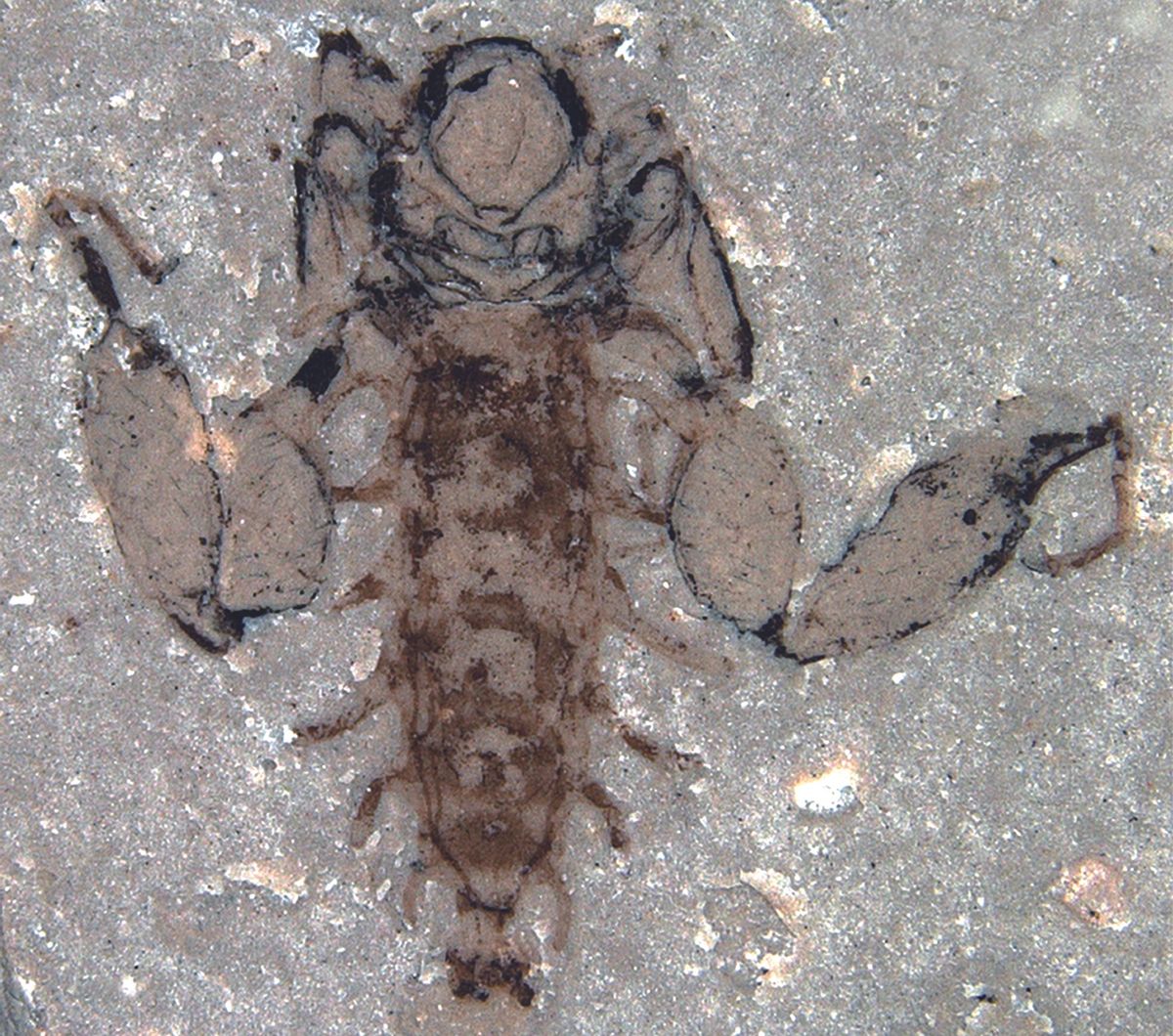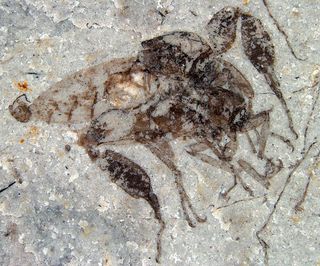Jurassic Insects Wrongly Accused of Sucking Dino Blood

A group of Jurassic insects thought to have been parasites of feathered dinosaurs were falsely accused, new research finds. Instead, the tiny creatures were aquatic flies, similar to some still living today.
The findings don't change the reality that dinosaurs really did have lice and other parasites, Nanjing Institute of Geology and Paleontology researcher Diying Huang and his colleagues write in the Feb. 21 issue of the journal Nature. Huang and his colleagues had previously discovered dino-fleas 10 times the size of the ones that plague mammals today.
But insects known as the strashilids had been wrongly identified as bloodsuckers, Huang and his colleagues now conclude.
The itsy-bitsy insects, only a few millimeters long, have grasping back legs and what appeared, in fossilized specimens, to be a sucking beak. These remains made scientists think strashilids belonged to an extinct group of dinosaur parasites. But researchers had only discovered a handful of these Jurassic insects.
Now, Huang and his colleagues have examined 13 new specimens of strashilids from 165 million years ago, found in Inner Mongolia. Two of these specimens even preserve males and females having sex. [See Images of the Fossil Flies Having Sex]

The new look at these ancient insects reveals that only male strashilids had grasping back legs, an indication that these limbs were used to hang on to females during sex, not to cling to dinosaur feathers during feeding. What's more, both sexes had vestigial mouthparts, suggesting the short-lived adults didn't feed at all. The insects also had large, membranous wings.
An examination of the insects' genitalia matched them to a modern group of flies, the Nymphomyiidae. These flies have feathery wings and live along rapidly moving streams. Like the Jurassic insects, adults of the present-day flies keep some vestiges of their larval selves. The ancient flies, in particular, often hung on to their abdominal gills, an unusual feature among insects, the researchers report.
Sign up for the Live Science daily newsletter now
Get the world’s most fascinating discoveries delivered straight to your inbox.
Researchers suspect that these flies probably shed their wings toward the end of their lives and returned to the water to mate as their last act. The fossils of flies engaged in the act, which reveal wingless males gripping wingless females, support that theory.
Actual dino-parasites from the Jurassic were larger than strashilids, measuring about 0.7 inches (17 millimeters) in length for species such as Pseudopulex jurassicus and Pseudopulex magnus. In one way, ancient fleas were less scary than modern versions, however — a 2012 study in the journal Nature found that Jurassic bloodsuckers probably couldn't jump.
Follow Stephanie Pappas on Twitter @sipappas or LiveScience @livescience. We're also on Facebook & Google+.

Stephanie Pappas is a contributing writer for Live Science, covering topics ranging from geoscience to archaeology to the human brain and behavior. She was previously a senior writer for Live Science but is now a freelancer based in Denver, Colorado, and regularly contributes to Scientific American and The Monitor, the monthly magazine of the American Psychological Association. Stephanie received a bachelor's degree in psychology from the University of South Carolina and a graduate certificate in science communication from the University of California, Santa Cruz.
Most Popular

